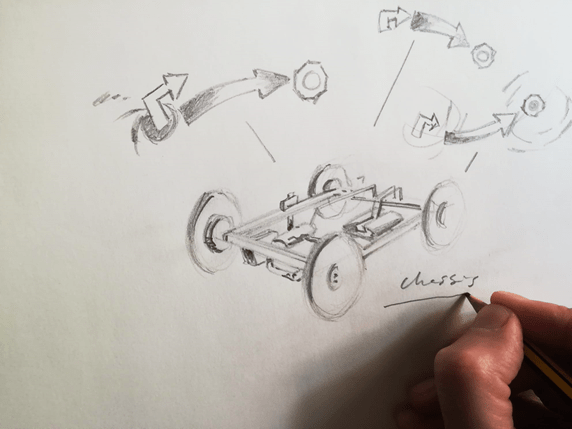A chassis is defined as the load-bearing framework of an object. In other words, the chassis supports the weight and the structure of the object so that it can function correctly. To illustrate this concept, think of a car. All the metallic framework that holds together the rest of the components is known as the car’s chassis, and without a robust chassis it would be impossible to integrate all the other components of the car (the wheels and tires, the seating, the motor, etc.).
The concept of chassis is not only used in the manufacturing world, bus also in biology and, more specifically, in Synthetic Biology (SB) (Figure 1). In this field, chassis refers to a platform (in most cases a live organism) that acts as framework and support for biological parts and components. Why is this relevant in SB?
“In Synthetic Biology, chassis refers to a platform that acts as framework and support for biological parts and components.”
SB is based on the re-design of organisms so that they can have functions that they would not normally have in a natural environment. The main difference between biotechnology and SB is that the former focuses on modifying or improving functions that already exist in an organism (for example, to increase the production of a certain compound that a plant or a bacteria naturally produce), whereas the latter focuses on introducing new functions (for example, to engineer a plant or a bacteria so that they can produce something that they wouldn’t have produced naturally).
The organism we choose to produce our compound of interest, therefore, qualifies as the chassis. Let’s say, for example, that we want to produce insulin in a microbial factory so that we don’t have to depend on animals as sources for this compound. This is what the biotech company Genentech thought in the 1970s, and they were the first to produce synthetic ‘human’ insulin using the bacteria Escherichia coli as their cell factory, as their chassis.
There are thousands, if not more, examples of bacterial cell factories that have been engineered to produce compounds of interest, and most of these use E. coli as their chassis. Why? Well, basically because E. coli one of the most studied and well understood organisms on the planet, it is easily reproducible in a laboratory, it can survive in a range of different growth conditions, and there are many tools available to perform genetic modifications. The question is, is E. coli really the best chassis for any type of application? Shouldn’t we look for other – better – chassis instead of just sticking to the one that is used the most?
That is what the scientists working in the BioRoboost Project asked themselves, and the answer to these questions was clear and unanimous: we should explore other options and develop a standard set of chassis with as many different characteristics as possible to cover the largest range of applications. It is well known that E. coli can’t survive at very high temperatures or under strong salt, dehydration or oxidation stresses. Therefore, it’s important to search for other chassis that can resist these conditions and that can be used in a much wider range of biotechnological applications.
“…we should develop a standard set of chassis with as many different characteristics as possible to cover the largest range of applications”
For example, Bacillus subtilis is a bacterium that is able to survive under harsh conditions because it is able to form very resistant spores. Pseudomonas putida is a bacterium that is able to survive in the presence of organic solvents in concentrations that are lethal to most microorganisms, and it has been used frequently for the clean-up of industrial waste. Deinococcus is a genus of bacteria that is particularly promising of these microorganisms, so that they can be used as standard chassis for synthetic biology applications.


